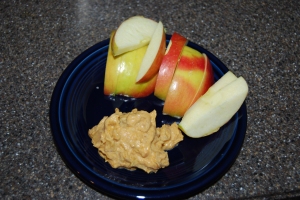 I was completely shocked when I read that America’s top weight loss coach, best-selling author and nationally known expert on weight loss, nutrition and health – Dr. Jonny Bowden said that sardines are “health food in a can.” I was even more shocked to learn that sardines can not only help with overwhelming fatigue, but they can improve my mood, memory and metabolism.
I was completely shocked when I read that America’s top weight loss coach, best-selling author and nationally known expert on weight loss, nutrition and health – Dr. Jonny Bowden said that sardines are “health food in a can.” I was even more shocked to learn that sardines can not only help with overwhelming fatigue, but they can improve my mood, memory and metabolism.
Sardines are full of healthy omega-3 fats. While we typically think of fat as “bad,” Omega-3 fats are definitely the exception. Why? Consider that a mere ½ gram of omega-3 fats a day can significantly decrease cardiovascular risk. Omega-3s can also reduce the risk of stroke and reduce the symptoms of depression, attention deficit hyperactivity disorder (ADHD), joint pain and rheumatoid arthritis. Omega-3s have even been linked to protection against Alzheimer’s.
We’ve all heard that we should eat more salmon to increase our intake of omega-3 fatty acid, but sardines are an equally good choice. Sardines are also convenient, since they can be eaten straight from the can, no preparation needed.
 Speaking of the can, make sure that you get sardines packed in their own oil or olive oil, but do not buy the kind packed in vegetable oil. The vegetable oil simply loads them up with omega-6 fats, which are not good for you at all.
Speaking of the can, make sure that you get sardines packed in their own oil or olive oil, but do not buy the kind packed in vegetable oil. The vegetable oil simply loads them up with omega-6 fats, which are not good for you at all.
Omega-3 fats aren’t all you will get from those little fish. Sardines are also loaded with calcium, iron, magnesium, phosphorus, potassium, zinc, copper and manganese. One can of sardines also provides over 150 percent of your Daily Value of vitamin B12. Sardines are also a great choice for pregnant women because they are low in mercury, unlike tuna.
I headed to Trader Joes to pick up my dreaded can of sardines. I trust Trader Joes and figured if I had to try those little suckers, I’ll buy it from my go-to health food store.
I have a confession though – I let that little can of sardines sit in my pantry for three full months before I built up the courage to try them. I was dreading the day I would have to try them. I even considered blogging about the health benefits without trying them, but quickly snapped back to my senses. My commitment to you is that I will try every one of the top 150 foods on earth, even as horrible as they may sound. I survived bee pollen. I actually enjoyed kale. I could survive sardines.
 I found a sardine recipe in the December 2010 edition of Whole Living magazine and decided that it was time….
I found a sardine recipe in the December 2010 edition of Whole Living magazine and decided that it was time….
The article stated that this dish, Spinach Pesto with Sardines, was essential to try if you are “feeling fatigued and spreading yourself too thin.” Bingo! I was definitely feeling run down, tired and overwhelmed – maybe this would help.
I prepared the recipe (below) and gingerly placed two sardines on top of the pesto covered Naan bread. I closed my eyes so I wouldn’t have to look at those little fish bodies and I bravely took a bite. The spinach pesto was delicious and the sardines were innocuous. Their flavor was milder than tuna and the texture was firm, neither crunchy nor mushy. If I could just get over their appearance, I’d be willing to add these babies to my regular rotation, but I have a difficult time ignoring their headless shining bodies.
Give this recipe for Sardine topped Spinach Pesto a try and let me know what you think. The recipe suggested serving on rustic bread, but I found the Indian Naan bread at Trader Joes to be absolutely delicious!
Spinach Pesto with Sardines
Ingredients
- 1 lb. baby spinach
- 2 cloves garlic, minced
- ¼ tsp red pepper flakes
- ½ cup toasted pine nuts
- 1/3 cup grated Parmesan
- ¼ cup extra-virgin olive oil
- 1 can sardines
- 1 package Trader Joes Naan Bread
Instructions
Sautee spinach with garlic and red pepper flakes until wilted. Transfer to food processor and add pine nuts and Parmesan. Pulse until finely ground. With the machine running, add the olive oil and season with salt. Meanwhile, toast the Naan bread. Spread the Naan bread with the spinach pesto and top with two sardines.














